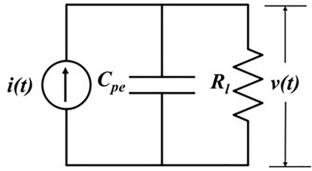Design, modeling, and experimental verification of reversed exponentially tapered multimodal piezoelectric energy harvester from harmonic vibrations for autonomous sensor systems
Abstract
Energy harvesting from multiple modes using piezoelectricity ensures the harvesting of energy from the varied ambient, wideband vibration sources for wireless autonomous sensor systems. In the reported studies, a piezoelectric energy harvester (PEH) with high strain concentration and multimodal characteristics plays an important role in enhancing the harvester's vibration amplitude, performance, and frequency bandwidth. This paper proposes a novel multimodal piezoelectric energy harvester by taking advantage of multimodal techniques consisting of a reversed exponentially tapered beam (Primary beam) and six branched beams (Secondary beam) attached to the primary beam’s free end with a proper flange. This design provides wideband with closely placed vibration modes while the reversed exponentially tapered beam attached to the secondary beams configuration provides higher strain distribution and hence improved harvested power. The harvester is subjected to continuous transverse vibrations due to vertical sinusoidal base excitation of varying frequencies and acceleration ranges. As a result, the primary beam with the piezoelectric patch continually deforms and generates electrical energy. The harvester’s theoretical model was developed and derived from the Euler–Bernoulli beam theory. The proposed harvester was fabricated, and its performance evaluated through experimentation at frequencies ranging from 8 to 30 Hz. Experimental results and numerical simulations using COMSOL Multiphysics confirmed the accuracy of the proposed theoretical model. As ambient vibrations were available in a band of frequencies, the proposed multimodal harvester had the potential to capture energy from wideband ambient vibration sources and hence was advantageous over conventional single-mode harvesters in sourcing low-power autonomous sensors. An energy management system designed after investigating the charging behavior of the capacitor with the harvester revealed that the proposed harvester was suitable for source wireless autonomous sensor systems.


 求助内容:
求助内容: 应助结果提醒方式:
应助结果提醒方式:


